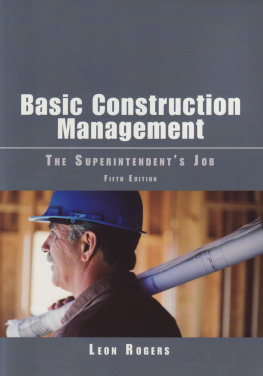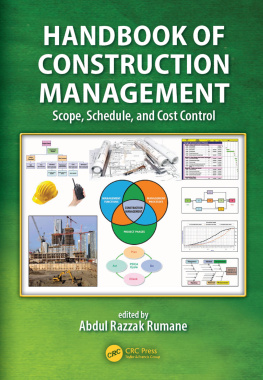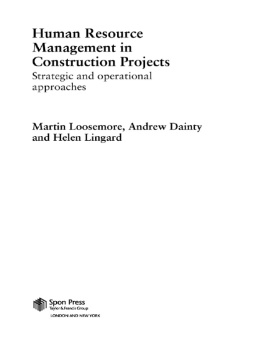Table of Contents

The books companion website is at www.wiley.com/go/MCM7 and offers invaluable resources for both students and lecturers:
Solutions to the self-learning exercises
PowerPoint slides with discussion topics
Journal and web references
This edition first published 2013 John Wiley & Sons, Ltd
2006, 2013 John Wiley & Sons, Ltd.
Blackwell Publishing was acquired by John Wiley & Sons in February 2007. Blackwells publishing program has been merged with Wileys global Scientific, Technical and Medical business to form Wiley-Blackwell.
Registered office:
John Wiley & Sons, Ltd, The Atrium, Southern Gate, Chichester, West Sussex, PO19 8SQ, UK
Editorial offices:
9600 Garsington Road, Oxford, OX4 2DQ, UK
The Atrium, Southern Gate, Chichester, West Sussex, PO19 8SQ, UK
2121 State Avenue, Ames, Iowa 50014-8300, USA
For details of our global editorial offices, for customer services and for information about how to apply for permission to reuse the copyright material in this book please see our website at www.wiley.com/wiley-blackwell.
The right of the author to be identified as the author of this work has been asserted in accordance with the UK Copyright, Designs and Patents Act 1988.
All rights reserved. No part of this publication may be reproduced, stored in a retrieval system, or transmitted, in any form or by any means, electronic, mechanical, photocopying, recording or otherwise, except as permitted by the UK Copyright, Designs and Patents Act 1988, without the prior permission of the publisher.
Designations used by companies to distinguish their products are often claimed as trademarks. All brand names and product names used in this book are trade names, service marks, trademarks or registered trademarks of their respective owners. The publisher is not associated with any product or vendor mentioned in this book. This publication is designed to provide accurate and authoritative information in regard to the subject matter covered. It is sold on the understanding that the publisher is not engaged in rendering professional services. If professional advice or other expert assistance is required, the services of a competent professional should be sought.
Limit of Liability/Disclaimer of Warranty: While the publisher and author have used their best efforts in preparing this book, they make no representations or warranties with the respect to the accuracy or completeness of the contents of this book and specifically disclaim any implied warranties of merchantability or fitness for a particular purpose. It is sold on the understanding that the publisher is not engaged in rendering professional services and neither the publisher nor the author shall be liable for damages arising herefrom. If professional advice or other expert assistance is required, the services of a competent professional should be sought.
Library of Congress Cataloging-in-Publication Data
Harris, Frank, 1944
Modern construction management / Frank Harris and Ronald McCaffer with Francis Edum-Fotwe. 7th ed.
p. cm.
Includes bibliographical references and index.
ISBN 978-0-470-67217-4 (pbk. : alk. paper) 1. Construction industryManagement. I. McCaffer, Ronald. II. Edum-Fotwe, Francis. III. Title.
HD9715.A2H35 2012
624.068dc23
2012023206
A catalogue record for this book is available from the British Library.
Wiley also publishes its books in a variety of electronic formats. Some content that appears in print may not be available in electronic books.
Cover image: courtesy of Shutterstock.com.
Cover design by Meaden Creative.
Preface to the Sixth Edition
The book is intended for students and graduates of civil engineering, construction management, building and quantity surveying, and is arranged to reflect site, business and corporate responsibilities embraced by the S/NVQ supervisory and management levels of career development. This approach acknowledges that the modern successful construction engineer, builder or quantity surveyor needs to be a competent technologist possessing complementary skills and knowledge in management as well as understanding the business processes. Armed with such expertise the young construction trainee will be better prepared for decision-making and undertaking executive responsibilities.
The new edition has been guided by the drive for improvement in construction industry performance stimulated through the Rethinking Construction and Construction Best Practice programmes.
Recently restated under the Accelerating Change initiative as committed leadership, client satisfaction, integrated processes and teams, quality management and social responsibility, the opening overview sets out the key points which are subsequently interweaved throughout the text. The construction engineer, builder or quantity surveyor is thereby better positioned to understand and implement modern strategies needed in providing value for money for the client and society.
The book begins by emphasising the important role of total quality management and safe working that now pervades every aspect of construction activity. The subsequent sections are: project production management describing the management techniques employed on site; business management, which addresses the relevant commercial aspects; and finally administration and company management covering corporate activities including IT systems and international work.
The processes essential in delivering continuous improvement and meeting performance indicators are especially featured, while the principles of lean construction, concurrent engineering, supply networks, re-engineering, value and risk management are given prominence. The latest contractual innovations, notably design and build, PFI/PPP, term, prime, managing agent, early contractor involvement, framework agreements and alliances, are evaluated, with reverse auctions contrasted with negotiated contracts and detailed pre-selection. Issues for business development and business models, business process outsourcing, matrix management, incentives and plant hire are also treated. In addition, topical concerns on construction productivity, relationship marketing, environment and sustainability, the Kyoto protocol, corporate social responsibility, corporate governance, data protection, international construction contracts, investment monitoring and regulation, RFID tagging, health, safety and training are brought to the readers attention.
Finally, the comprehensive selection ofworked examples, designed to help the reader consolidate learning, is augmented in this edition by 25 new tutorial exercises dealing with the Operational Research methods, invaluable for analysing the many challenging facets of construction management featured in the contents.
Preface to the Seventh Edition
The book is intended for students and graduates of civil engineering, construction management, building and quantity surveying, and arranged to reflect site, business and corporate responsibilities embraced by the latest national vocational qualifications available for supervisory and management levels of career development. This approach acknowledges that the modern successful construction engineer, builder, commercial manager or quantity surveyor needs to be a competent technologist who possesses complementary skills and knowledge in management as well as understanding the business processes. Armed with such expertise, the young construction trainee will be better prepared for decision making and undertaking executive responsibilities.
Next page










